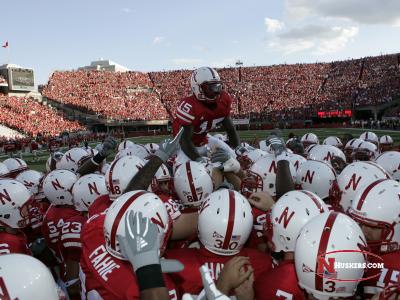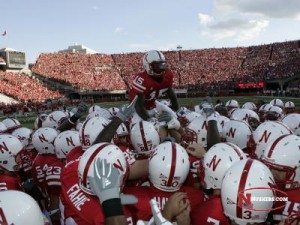Originally posted at the Distributist Review.
West Chester, PA. With the completion of the Oregon v. Auburn national championship game last month, the ever-lengthening college bowl season came to a close. College football carries with it much of what some think of as good and endurable about our modern circumstances. Not, of course, something of ultimate consideration, but certainly something worthy of attention, where one might be a fan while not slipping into the role of the fanatic. There is purity to the game—or so it seems on the surface—with something of an amateur-status wall in place to stave off the corruptions of overly-ambitious sports-agents, professional contract squabbles, lock-outs, and the like. Even with the game being circled-in by the business of both higher education and the professional ranks, this appearance of purity or the reality of the game’s integrity is still not entirely upset.
College football’s purity has been challenged by numerous teams jumping from one conference to another; assumedly to increase both their financial and bowl-related prospects. One such example is the planned University of Nebraska move to the Big Ten, which will happen later this year. The most noble reasoning for the Cornhusker jump can be found in a piece from ESPN.com: “Osborne [Athletic Director] and Perlman [University Chancellor] both made the case that Nebraska is better aligned with the Big Ten academically, culturally and even in climate.” There is certainly truth in this statement, but it has to be weighed against the following, it too from ESPN.com:
To generations of Nebraska fans, going to the Big Ten at one time would have been unthinkable. The school’s athletic tradition is built on more than a century of football games against the likes of Missouri and Kansas, dating to the days the team was known as the Bugeaters.
The Huskers, in fact, have been conference partners with Iowa State, Missouri, Kansas, Oklahoma and Kansas State since 1928; with Colorado since 1948; and with Oklahoma State since 1960.
Now the Huskers are taking their five national titles in football, three Heisman trophies and enthusiastic fans east. They will look to start building new traditions, such as a border rivalry with the Iowa Hawkeyes and regular trips to Ohio State, Michigan and Penn State.
With such a history, it is saddening to watch Nebraska water down its attachments. (Though it should be noted that the Nebraska incorporation is certainly not as egregious as Texas Christian University entering the Big East in 2012, mind you.)
Nevertheless, the attachment to college football remains for many Americans. For some, the love of college football is the product of local attachments, inherited affiliation, or loyalty to one’s alma mater, state, town, or region. “Dad likes this team, as does Grandpop, so, well, so do I.” Such affection and loyalty can also lead to particular folkways, traditions, rivalries, biases, and dislikes of the relatively harmless variety. Take for example the annual meeting of the Harvard and Yale football teams, known simply as The Game, which was first played in the late-1800s. Another example is found in the annually mismatched Delaware v. West Chester game (31-0 this year in favor the Blue Hens). This game isn’t worth watching merely for its competitiveness, but for its tradition. As one who has gone to this game in the past, it is still worth the time to attend in order to see the tradition continue.
Folkways brought about through college football lend a certain color to a locale and region. For instance, I wasn’t aware of the particular Western Pennsylvanian dislike of the nasty “Nitters” from Penn State prior to enrolling at the University of Pittsburgh. While at Pitt, I developed a sense of the uniqueness of the region, that this was a place—a real, living place—with an identity and history, and that amongst these twenty-somethings this identity had been passed on, no matter how incompletely or imperfectly.
The Big Ten has a palpable, if loosely identifiable, grittiness to it. Games played in locales from the middle of Pennsylvania to the upper-mid-West carry with them a sense of toughness and stoutness of heart. Some of this might come from the simple fact of the cold and snow that always set a more dramatic scene for a football game. Michigan’s weather can even make games in a trendy campus town like Ann Arbor come off as close relatives to those played on Lambeau’s icy tundra. The teams of the conference, of course, often express this larger sensibility: tough defenses, run-focused offenses—Penn State is even referred to as Linebacker U., and there is no position with a greater mystique of toughness than that of linebacker (think Butkus or Singletary).
All in all the conference seems to have a self-contained identity rooted to a geographic region. The inclusion of Penn State in 1989 was not antithetical to this regional rootedness either. This somewhat cohesive identity becomes more fragile with the impending inclusion of the University of Nebraska though. Now, nothing against the plain states, but Nebraska isn’t exactly Michigan, Wisconsin, or the middle of Pennsylvania. At least from my perch, and I could be wrong, it doesn’t seem to carry the same regional sensibility. Admittedly, the University of Iowa is in the Big Ten, but even though the Hawkeye state borders Nebraska its university’s football team seems to fit the Big Ten while the Cornhuskers of Nebraska come off as a bit too far in the west.
Nebraska is not the sole party to criticize here; the Big Ten deserves its share as well. And, while I doubt regional identity was on the higher end of the conference decision-makers’ considerations, it should be noted that the impressiveness of the Big Ten is determined by more than how many wins its teams accumulate or how healthy its revenue stream is. Regional identity and cohesion, can, of course lend to the venerability of an institution.
The question remains: does all of this really matter? Americans are, after all, nothing if they aren’t sports fans. Even some of those who consider football nothing more than some meatheads mashing one another in between million-dollar commercials will tune in on Sunday for the Super Bowl. Something important is happening, however indefinable, when people either watch or partake in athletics. With this in mind, cases like the University of Nebraska jumping athletic conferences gain significance. Here, in seemingly pure college football, is an example of the pragmatic and the commercial uprooting tradition and local affection in exchange for a bowl game.
—
Matthew Chominski is the editor of the Publican of Philadelphia. He lives in his native Pennsylvania with his wife and son.








5 comments
Matthew
Disclaimer–University of Nebraska ’91
While I appreciate the thoughts in the article I believe they are driven by sentimentality for a past that may, I say may, have existed at some point, but is certainly gone now. Regionalism may have been the reason for conference formation in the early/mid 20th century but that had more to do with the need to move athletes by bus or car than by an urge to create a regional mystique.
Amateur athletes in football risk future cognitive and joint function for free but that doesn’t mean many, many others don’t make money off of the sport and that at the major college level this urge for profit isn’t a driving force. Almost certainly the move to the Big 10 by Nebraska was engineered out of the University of Texas. The Longhorn sports channel was being held up by the Nebraska vote. Texas threatened to blow up the Big 12 by going west to Pac 10 taking Oklahoma, Texas A&M and Oklahoma State with them. Seeing the conference about to collapse Nebraska moved to the Big 10. Texas stayed put and got their sports network, revenue they won’t need to share with the conference. I doubt they asked themselves about the implications to regionalism.
That being said I wish the Big 8 still existed and that this fall Nebraska would be returning to Lawrence and Norman to try their luck against their ancient foes. Even if it doesn’t really exist the idea of tradition still calls.
G. Koefoed
The truth is this stuff happens all the time in college football. It’s not just about money, the move benefits both the Big Ten and Nebraska from a competitive standpoint. The Big Ten needed to improve its national reputation in football, and Nebraska needed to get out from under Texas’ and Oklahoma’s dominating shadow in recruiting, winning, money, and control of the Big 12.
I appreciate the argument that Plains states are distinct from Midwest (Old Northwest) states culturally – an argument I’ve tried to explain to ignorant East and West Coast people for years – but if you really want regionalism, the move to the Big Ten will allow Nebraska to compete with more of their own local players vs. living off the leavings of Texas recruiting every year.
Finally, the academic argument is a serious one. Again, the only teams on par with Nebraska in combining football prowess with academic reputation are arguable Oklahoma and Texas (see a trend here). In the Big Ten, Michigan, Penn State, Wisconsin, and Ohio State (this is close one academically for a Michigan fan) combine excelsior football traditions with world class faculties, university presses, professional schools, etc…then, football aside, there is not another school in the Big 12 that is on par with Illinois, Indiana, or Northwestern academically. Don’t think the president doesn’t mean what he says when he mentions academics.
I like the Big Ten precisely because it comes closest as an entire conference to balancing academics, sports, and tradition. The Harvard/Yale game is a joke only rich people whose kids play lacrosse would bother watching, and conversely the SEC academics by and large are a joke compared to the time, talent, and indeed intellectual energy that goes into football. Money can help academics, depending on how it is used. The Big Ten allows more of its money it makes in football to go back into the school generally vs. just back into the football program, and coaches like Joe Paterno build the libraries. That’s pretty cool, maybe Nebraska likes it too. Given that they reinvigorated their faltering academic press by publishing academic studies of sports, the Big Ten seems like a perfect home for them; even if this Michigan fan has another worry on the schedule each year.
Mike
As a UGA alumnus and a big football fan, I too find the uprooting of tradition with the Nebraska move to be purely for pragmatic and commercial reasons. I love college football, I only partially follow pro football, and as a fan of the SEC, it is hard to see this as anything other than the first in a series of dismantling moves that will damage an already tenuous framework of tradition that makes college football so enjoyable.
It is not that these types of things haven’t happened before, the old Southwest conference breaking up put Arkansas in the SEC, which still doesn’t seem to fit. Nebraska’s move seems more logical even than TCU moving to The Big East and Colorado and Utah moving to the PAC 10. Part of what I love about being a southerner is the traditions in which we take part each fall. I have family that went to Auburn, Alabama and even Georgia Tech, all of which have huge rivalries. These rivalries make for family gatherings that have been a major part of my life. The food, the good natured ribbing, the family fellowship are all apart of the college football experience for me, and it saddens me that there are large groups of Nebraska fans who will lose many of the traditions they have held so dear for so long.
ASKlein
Michigan alum here. This is definitely one of the better articles I’ve read concerning Nebraska’s inclusion to the Big 10. The cynic in me, unfortunately, can’t ignore the money. The Big 10 has it’s very own egregiously priced cable network. Even when my Wolverines were struggling to break .500 at least half their games were nationally televised. The cultural aspects you touch on above all ring true, and its those aspects that made college football more part of me than the NFL ever could. The majority of my family is from Ohio (Grandma: “You’re going to State, right?” Me: “No, Grandma, Michigan.” Grandma: “Oh, dear.”), a portion of which has relocated to Nebraska. There is a significance to college football’s regionalism, a significance I’ve struggle to find words for until I found this piece.
But the money, damn, the money. Nebraska’s inclusion is only going to make the Big 10 even more of a revenue juggernaut, and sadly I believe that it the underlying reason behind the move.
John Gorentz
Good article. I like articles that agree with me and reinforce my own prejudices, especially when they are well written and contain clear explanations, like this one.
My wife is more of the sports fan than I am. She follows MSU Spartan football and basketball pretty closely, and can usually inform me about the injury reports, the police reports, etc. I enjoy watching games with her, and taking her to a game occasionally, though don’t care to arrange my schedule around it like she does. If there is an opportunity for a good bike ride, I do that instead.
I pay even less attention to the pro games. The college game is interesting because these kids are students. Some of them are, anyway. Those of us who work for MSU get occasional reminders explaining what we can and cannot do to accommodate student athletes. I like those reminders. The student-athlete role is partly fictitious, promoted by the university PR departments, but I support anything that makes it more of a reality, and oppose anything that makes it less so.
The Big Ten tends to recruit from the Old Northwest. It’s a regional thing. The players aren’t completely interchangeable, geographically. Nebraska is not in the Old Northwest. Well, neither is Iowa, but eastern Iowa’s history is more intertwined with that of the Old Northwest than is Nebraska’s. I grew up out on the Great Plains. It’s appropriate for the people out there to look at themselves as different and superior to those in the east, and from Nebraska’s point of view, Michigan is part of the effeminate, citified east. At least that’s how I thought of it when I was a kid who read the comics in the Omaha World Herald every day. Nebraska should not be going over to the dark side just because I did.
I am also against turning the college postseason into a tournament, because it lessens the importance of all of those traditional rivalries, and lessens the importance of the game (as opposed to the national polls). I could go on in curmudgeonly fashion about this.
BTW, even though I seldom watch professional football, especially in recent years, I am going to watch the Super Bowl tomorrow, the first I will have watched in many years. I got interested when I saw in the headlines that Green Bay and Chicago were playing for the championship, so sat down and watched most of that game. Two central division teams that go way back to the dawn of history was just too good to pass up. Those traditional, geographic rivalries are interesting. College football has a lot more of that than the pros do, and it’s a shame to see the college people trying to throw it away.
Comments are closed.